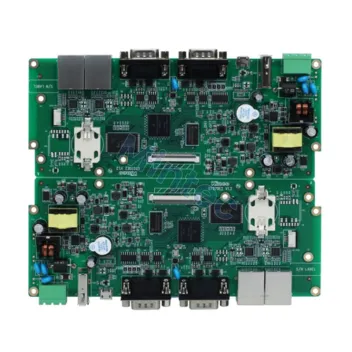PCB Assembly for Industrial Control Equipment: Ensuring Precision and Reliability
In today's fast-paced industrial landscape, control equipment plays a pivotal role in ensuring seamless operations and maintaining high levels of precision and reliability. One crucial component that enables the functionality of industrial control equipment is the Printed Circuit Board (PCB). In this article, we will explore the significance of PCB assembly in industrial control equipment and the key factors to consider in this critical process.
The Role of PCBs in Industrial Control Equipment
Industrial control equipment encompasses a wide range of devices used in manufacturing processes, automation, robotics, and other industrial applications. These devices rely on PCBs to provide the necessary circuitry for controlling processes, monitoring parameters, and ensuring safety. PCBs act as the central nervous system of industrial control equipment, facilitating communication between various components and sensors.
Precision and Reliability
Precision and reliability are paramount in industrial settings, where even a minor malfunction can lead to costly downtime or safety hazards. PCB assembly for industrial control equipment demands a meticulous approach to ensure that each component is correctly placed and soldered, and that the circuitry is free from defects. Precision is not only about the accuracy of component placement but also the adherence to tight tolerances in terms of electrical characteristics.
Component Selection and Sourcing
Selecting the right components is a critical aspect of PCB assembly for industrial control equipment. Components should be chosen for their durability, resistance to environmental factors (such as temperature and humidity variations), and suitability for the specific application. Additionally, sourcing components from reputable suppliers is essential to guarantee quality and consistency.
Design for Manufacturability (DFM)
Design for Manufacturability is a concept that focuses on creating PCB layouts that are optimized for efficient assembly. For industrial control equipment, DFM considerations include component placement, trace routing, and minimizing the number of complex or time-consuming assembly steps. A well-designed PCB layout not only streamlines the assembly process but also enhances the overall reliability of the equipment.
Surface Mount Technology (SMT)
Many industrial control equipment PCBs rely on Surface Mount Technology (SMT) for component placement. SMT components are smaller and lighter, which allows for higher component density on the PCB. This density is advantageous for compact control equipment designs. However, the assembly of SMT components requires specialized equipment and skilled operators to ensure precise placement and soldering.
Quality Control and Testing
Quality control is a pivotal stage in PCB assembly for industrial control equipment. Rigorous testing procedures, such as Automated Optical Inspection (AOI) and In-Circuit Testing (ICT), are employed to detect defects, including soldering issues, short circuits, and component misalignment. These tests ensure that the final PCB assembly meets the highest quality standards and is ready for integration into control equipment.
Compliance and Certification
Industrial control equipment often needs to meet specific industry standards and regulatory requirements, such as those related to safety and electromagnetic interference. PCB assemblies must comply with these standards, and manufacturers should be prepared for certification processes to ensure that their equipment is suitable for use in industrial environments.
Customization and Scalability
Industrial control equipment varies greatly in its complexity and functionality. PCB assembly processes should be adaptable to accommodate customization and scalability. This flexibility enables manufacturers to meet the diverse needs of their customers and respond to changes in demand without major disruptions in production.
In conclusion, Industrial Control PCBA is a critical and highly specialized process that demands precision, reliability, and adherence to industry standards. The role of PCBs in industrial control cannot be understated, as they form the backbone of the equipment's functionality. By focusing on component selection, design for manufacturability, quality control, compliance, and scalability, manufacturers can ensure that their PCB assemblies contribute to the success of industrial operations by delivering the necessary precision and reliability.



评论
发表评论